"The demand for Asiatic herbs is very good and still increasing", says Frank de Greef of Fleurizon. For several years now, they produce Asian herbal rooted plugs and cuttings at one of their farms in Asia and over the years they have built up a wide assortment. "The popularity of herbal plants contributes to the interest in different Asiatic herbs."
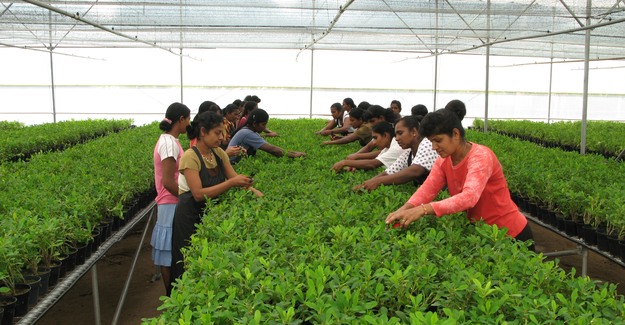 Cuttings produced in the greenhouse.
Cuttings produced in the greenhouse.
Popularity
Asiatic herbs are popular, but why? "On the one hand, we think it is because the Asiatic food is becoming worldwide more and more a phenomenon and Asian food restaurants are still popping up at many places. On the other hand, we believe that consumers want to try to make the delicious food themselves and are looking for fresh herbs in their kitchen to replace the dried herbs and/or ready packages which are now often used. And of course, it is fun for the consumer to have these herbs around in the kitchen and smell them every now and then."
Bio plant production
The Asian herbal plants are produced at one of Fleurizon's farms in Asia. They are specialized in shipping to growers all over the world. "We produce rooted plugs and just a couple herbs as unrooted cuttings. All rooted material is produced in coco plugs, so perfect for bio plant production as no plastic pots are used."
Expanding range
According to Frank, the popularity results in a high demand for their Asiatic herb. "We more and more receive requests for more or different kinds of herbal plants, so we therefore decided to continue expanding our range." Currently, they grow 30 herbal plants.

Eager to learn more about the herbs?
"Some herbs are also known for use as medical treatments, but that is an angle we know not much about and leave it as it is for the consumer to investigate."
Sit back and enjoy the (fun) facts of some of the herbs in Fleurizon's assortment provided by De Greef.
Alpinia galanga,
Alpinia galanga is a plant in the ginger fami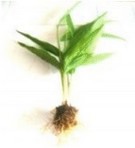 ly and is a herb used for cooking Indonesian and Thai cuisine. It is one of four plants known as galangal. The galangals are also called blue ginger or Thai ginger.
ly and is a herb used for cooking Indonesian and Thai cuisine. It is one of four plants known as galangal. The galangals are also called blue ginger or Thai ginger.
As a food, the rhizome is a common ingredient in Thai soups and curries. It is used fresh in chunks or thin slices, mashed and mixed into curry paste. It is used in Russia as a flavoring for beverages, including a liquor called Nastoika.
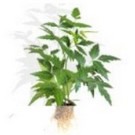 Azadirachta indica
Azadirachta indica
Azadirachta indica is a fast growing long living tree, its trunk grows to 12 meters. It is a bitter tasting herb. Notable to know (we don’t recommend): The bark is used for fever, nausea and vomiting. It has been traditionally used to treat Malaria, arthritis, intestinal worms as well as skin diseases.
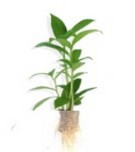
Costus speciosus
Costus speciosus or crape ginger is possibly the best known cultivated species of the genus Costus. This differs from the common ginger by having only one row of spirally arranged leaves.
Moringa oleifera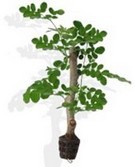
Moringa oleifera, is commonly referred to simply as "Moringa", it is the most widely cultivated species of the genus Moringa, which is the only genus in the family Moringaceae. It is an exceptionally nutritious vegetable tree with a variety of potential uses.
Notable to know: in Asia the leaves are highly nutritious, being a significant source of beta-Carotene, Vitamin C, protein, iron, and potassium. The leaves are cooked and used like spinach. In addition to being used fresh as a substitute for spinach, its leaves are commonly dried and crushed into a powder, and used in soups and sauces. The tree is a good source for calcium and phosphorus.
Moringa trees have been used to combat malnutrition, especially among infants and nursing mothers. Leaves can be eaten fresh, cooked, or stored as dried powder for many months without refrigeration, and reportedly without loss of nutritional value.
The Moringa pod is known as "drumstick" or saragwa or saragwe in India. It can be made into a variety of curry dishes by mixing with coconut, poppy seeds, and mustard. It can just be boiled until the drumsticks are semi-soft and consumed directly without any extra processing or cooking. It is used in curries, sambars, kormas, and dhal, and it is also used to add flavor to cutlets, etc.
Aloe vera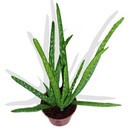
Aloe vera is really quite a highly valued plant. It is a succulent plant and part of the lily family (Liliacea). Aloe vera contains over 200 active components including vitamins, minerals, amino acids, enzymes, polysaccharide, and fatty acids. Aloe vera contains many vitamins including A, C, E, B1, B2, B3, B6, It is also one of the few plants that contains vitamin B12.
Aloe vera is also used in skin care products, and against sun burns and skin diseases. And one tea spoon of gel with one cup of orange juice is said to increase energy
Cucurma longa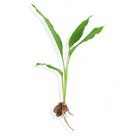
Turmeric (Curcuma longa) is a rhizomatous herbaceous perennial plant of the ginger family, Zingiberaceae.
The rhizomes are boiled for several hours and then dried in hot ovens. Then those are ground into a deep orange-yellow powder commonly used as a spice in curries and it is also used for dying in some South Asian and Middle Eastern countries. In medieval Europe, turmeric became known as Indian Saffron, since it was widely used as an alternative to the far more expensive saffron spice.
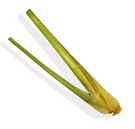 Cymbopogon citratus
Cymbopogon citratus
It is a tall perennial grass. Common names include lemon grass, barbed wire grass, silky heads, citronella grass, cha de Dartigalongue, fever grass, Hierba Luisa or Gavati Chaha amongst many others,
Lemongrass is native to India. It is widely used as a herb in Asian cuisine. It has a citrus flavor and can be dried and powdered, or used fresh. It is commonly used in teas, soups, and curries. It is also suitable for poultry, fish, and seafood. The stem and leaves are used as a spice for cooking in Asian cuisine. It is also used as an insect repellent. Another source is the use of Cymbopogon citratus in the cosmetic industry, such as in soap - and hair care products.
Above are several of our over 30 different Asian Herb plants, click here for the complete assortment.
For more information 
Fleurizon International
Frank de Greef
Email: info@fleurizon.com
www.fleurizon.com
